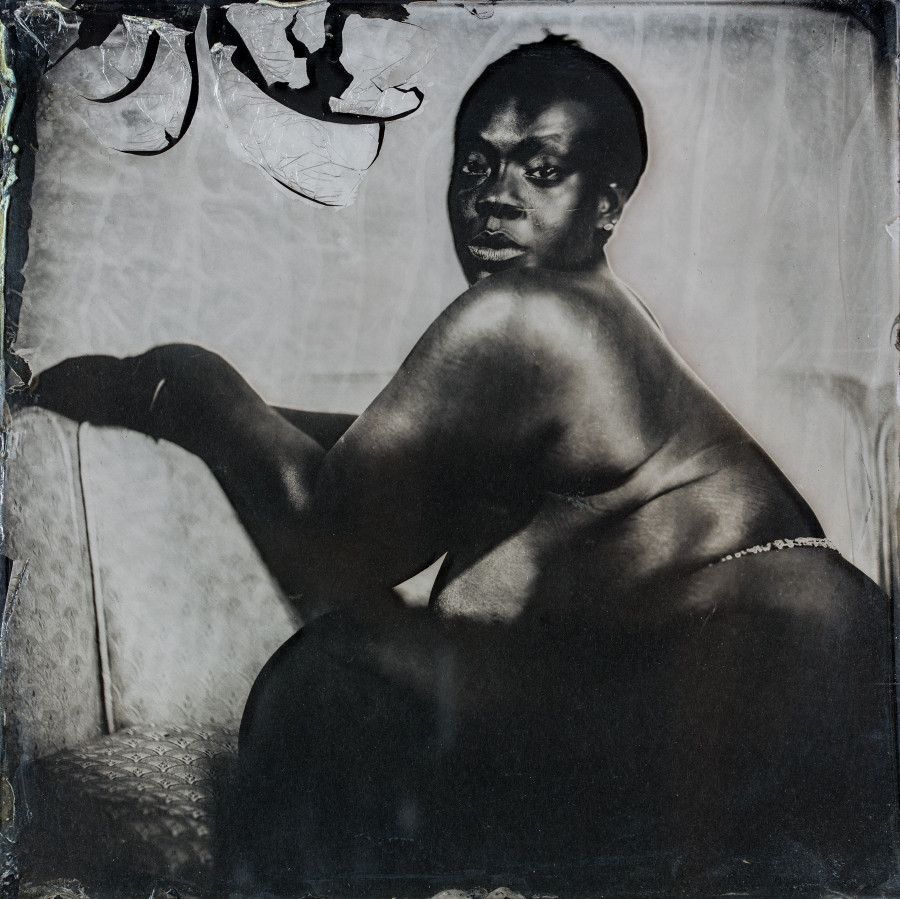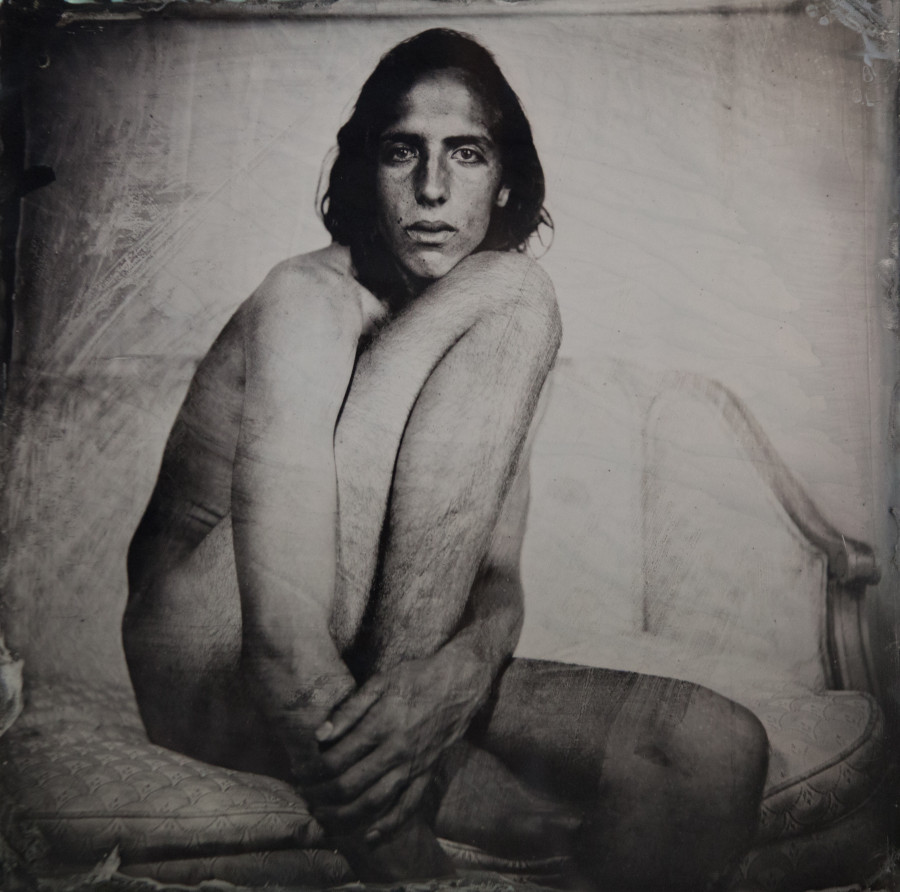Tintype Portraits Of Genderqueer Individuals Are The Nude Artworks Of Our Future (NSFW)

Upon first glance, Robyn Hasty‘s glass-plate portraits seem like they could have been generated alongside those of 19th-century photo giants like Julia Margaret Cameron or Nadar. The images, crafted with wet-plate collodion tintype and ambrotype developing processes, depict nude subjects meeting the viewers’ gazes, bodies sprawled elegantly across a love seat.
“The impracticality of obsolete technology informs my craft,” Hasty explains in her artist statement. “I have learned several labor intensive pre-industrial processes including tintype photography, primitive ceramics, and traditional African earth architecture. I use these techniques because I am drawn to the tension between fine craft and entropy that arises from the struggle of making with unpredictable results.”
Upon closer look at Hasty’s work, certain particularities come into view: tattoos, piercings, dreadlocks and baseball caps, to name a few, anchoring the images in a more contemporary climate. Look closer still, and the nudes on view subtly disorient the viewer’s attempt to classify or categorize, their exposed flesh raising more questions than answers. The enigmatic portraits depict a range of transgender, cisgender, genderqueer and gender nonconforming individuals, juxtaposing classical compositions and traditional photography methods with nonconformist subjects.

The photo series couples past techniques with future ideologies, yielding magnetic images that teeter precariously on the present moment. The collection is named “Z,” alluding to the gender neutral pronoun. Hasty’s subjects reveal their unclothed bodies before the camera, proving that gender isn’t something written on the flesh, but rather crafted in the mind. The portraits recall the work of 19th-century photographer F. Holland Day, whose hazy, mythical portraits toyed with notions of race, gender and identity far before postmodernism seeped into the public consciousness.
While Day opted for fantastical costumes to illustrate the slippery nature of the self, Hasty does the opposite, showing that even without clothing, her subjects still occupy a myriad of identities. The silvery tintypes convey the infinite possibilities embedded in the skin, and the futility of attempting to fix human beings to any single predetermined definition or classification.
Robyn Renee Hasty’s “Z”, curated by Walker Waugh, will be on view from June 11 until July 12, 2015, at Pioneer Works in Brooklyn.
— This feed and its contents are the property of The Huffington Post, and use is subject to our terms. It may be used for personal consumption, but may not be distributed on a website.
www.huffingtonpost.com/2015/06/15/robyn-hasty-z_n_7570870.html?utm_hp_ref=gay-voices&ir=Gay+Voices
You Might Like
